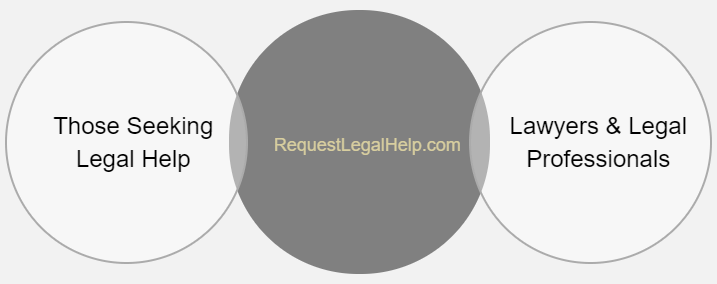Motorcycle Helmet Laws in All 50 States
Helmet laws do vary by state in America. Provisions range from universal laws to having no laws in place at all. This can make it difficult to narrow down laws for people who ride motorcycles in several different states. Here, find the basics of the motorcycle helmet laws for each state. An experienced attorney can also help you identify what helmet laws are relevant in your area.
States With No Helmet Laws
Despite the strong science behind the effectiveness of helmet laws, there are several states with no provisions. According to the Insurance Institute for Highway Safety, in these states, residents and visitors make their own decisions about whether they should wear a helmet:
- Illinois
- Iowa
- New Hampshire
States With Universal Helmet Laws: All Motorcycle-Type Vehicles Covered
Universal helmet laws require all riders in a designated area to wear helmets regardless of age. These are all the states that require helmets for all riders of any type of vehicle:
- Alabama
- California
- Louisiana
- Maryland
- Massachusetts
- Mississippi
- Nebraska
- Nevada
- New Jersey
- North Carolina
- Oregon
- Tennessee
- Virginia
- Washington
- West Virginia
States With Universal Helmet Laws: Some Motorcycle-Type Vehicles Not Covered
There are also several states that cover all riders, but not all vehicles. These states fall into that category:
- Georgia: Georgia allows riders operating mopeds to decide when to wear helmets if they are 16 years or older. The state defines a moped as a vehicle that has a maximum speed of 30 mph, brake horsepower of 2 or less and an engine displacement of 50 cc or less.
- New York: New York allows operators of all ages to decide if and when to wear a helmet while riding a class C limited use motorcycle. The state defines this as a vehicle that has a maximum speed of 20 mph.
- Vermont: Operators of all ages decide when to wear a helmet when driving a motor-driven bicycle. The state defines this as a vehicle that has a maximum speed of 30 mph, brake horsepower of 2 or less and an engine displacement of 50 cc or less.
States That Require Helmets at 17 and Younger: All Motorcycle-Type Vehicles Covered
Most states with more selective helmet laws tend to set the age limit at 17 years and younger. These are the only states that make helmets mandatory for riders 17 years and younger on all vehicles:
- Connecticut
- Hawaii
- Indiana
- Kansas
- New Mexico
- South Dakota
Some states that fit into this category include additional restrictions:
- Alaska: Alaska’s helmet laws also cover passengers 17 years and younger, as well as all riders who carry instructional permits.
- Colorado: Colorado’s helmet laws cover both operators and passengers who are 17 years or younger.
- Minnesota: Minnesota requires riders with learner’s or instructional permits to wear a helmet.
- North Dakota: In North Dakota, as long as the operator is 17 years and younger, all passengers on the vehicle must also wear a helmet.
- Ohio: Ohio’s helmet laws also apply to all riders during the first year of receiving a license. The passengers of all riders covered by the helmet law must also wear helmets.
States That Require Helmets at 17 and Younger: Some Motorcycle-Type Vehicles Not Covered
Once again, there are some jurisdictions that make exceptions for certain types of motorcycle-type vehicles. Below are the states with vehicle exceptions:
- Arizona: Arizona does not require riders operating a moped to wear helmets, even if they are 17 years or younger. The state defines a moped as a vehicle with brake horsepower of 1.5 or less, an engine displacement of 50 cc or less and a maximum speed of 25 mph.
- Idaho: Idaho does not require riders operating a moped to wear a helmet, even if they are 17 years or younger. The state defines a moped as a vehicle that has brake horsepower of less than 2, an engine displacement of 50 cc or less and a maximum speed of 30 mph.
- Maine: Maine does not require riders operating a motorized bicycle to wear a helmet, even if they are 17 years old or younger. The state defines a motorized bicycle as having a maximum speed of 25 mph and brake horsepower of 1.5 or less. It may or may not have pedals. Maine’s helmet laws do have several other provisions as well.
- Wisconsin: Wisconsin does not require riders operating a moped to wear helmets, even if they are 17 years or younger. The state defines a moped as a vehicle with a maximum speed of 30 mph, an engine displacement of 130 cc or less and pedals that are fully operable. In addition to this, riders using learner’s or instructional permits are covered.
- Wyoming: Wyoming does not require riders operating a moped to wear a helmet, even if they are 17 years or younger. The state defines a moped as a vehicle with a maximum speed of 30 mph, brake horsepower of 2 or less and an engine displacement of 55 cc or less.
States With Age Requirements From 18 to 25
Far fewer states require riders operating a motorcycle to wear a helmet within the age limit range of 18 years and younger to 25 years and younger. These are states that have such statutes for all motorcycle-type vehicles:
- Arkansas – 20 years and younger
- Pennsylvania – 20 years and younger
- Rhode Island – 20 years and younger
- Texas – 20 years and younger
- Utah – 20 years and younger
These states make certain vehicle exceptions that you may need to speak with an attorney about:
- Delaware – 18 years and younger
- Florida – 20 years and younger
- Kentucky – 20 years and younger
- Michigan – 20 years and younger
- Missouri – 25 years and younger
- South Carolina – 20 years and younger
Work With an Experienced Attorney
Do you feel overwhelmed by the varying and ever-changing helmet laws in America? An experienced attorney can help you navigate your legal matter. We can match you with the right one. To get started, submit a request online or call us today at (866) 345-6784 to get in touch with an attorney in your area!

